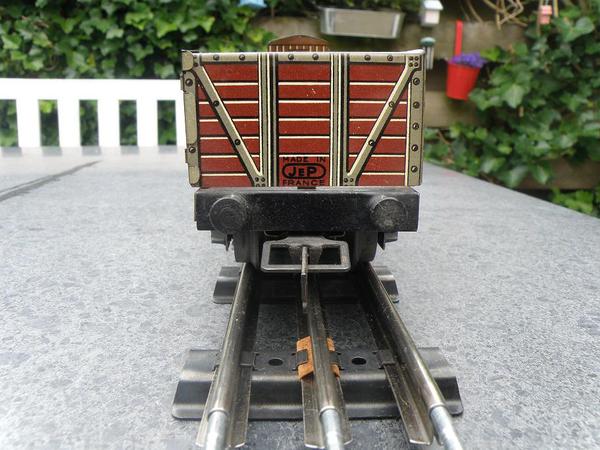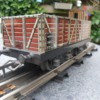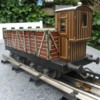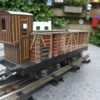I wanted to show you something you might not see every day. This is a prewar lithographed tinplate station from France. Made by JEP (Jouets de Paris), which also made a great line of prewar tinplate O Gauge trains. Found this on French eBay, and it arrived in great shape packed in a big box filled with inflated party balloons.
The station is 18" long, and those are 2-1/4" (1:32, 1 Gauge) lead figures, some of which were also made in France. I have the station paired with the JEP switch tower of the same vintage, and also a Marklin pedestrian overhead crossing bridge. I have plenty of British and German tinplate: prewar French tinplate is a relatively new discovery for me, I'm enjoying the different look.
















